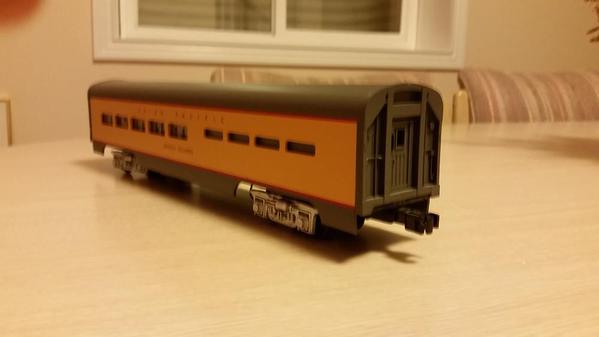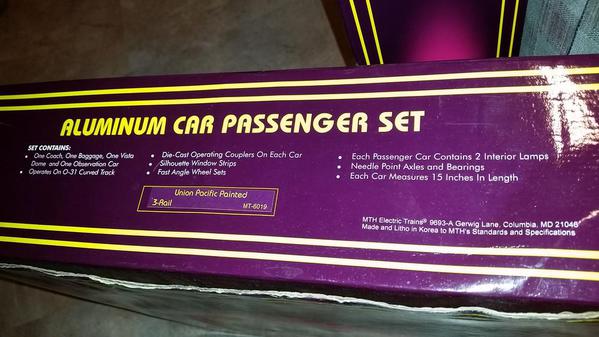Recently I bought a set of MTH UP Passenger Cars (I think from 1996). They are approx. 15" long. Catalog # MT-6019 and MT-6119 (6 cars in all-- on the sleeper diner set , 6119, the box says cars are 16" long but they are really 15", same as the 4 car set. Also 2.5 " wide, about 3.5" tall. The brochure inside refers to these trains as being Premiere cars. Did MTH use a different coding system for Premiere style scale trains before they used the 20- nomenclature?
What was the actual length of the passengers cars on these signature UP trains to California? or did the size vary over the years?
And if I wanted to get a locomotive that represented what was most commonly used to pull these trains, what would I get? I guess I mean the type of locomotive that made the most trips (if that is known)-- maybe the top 2. Is it diesels of the E series? if so what #. I have on order a F3 for another railroad so don't want to duplicate that for the UP train.
Finally, and maybe I have to post this question in another section: if I wanted to outfit the inside of these cars with seats (or dining tables for the diner car) and passengers, standing and sitting (and eating) where would I go to buy those. Also best source for diaphragms between cars? Crafting them myself is really not an option.
Thank you.










